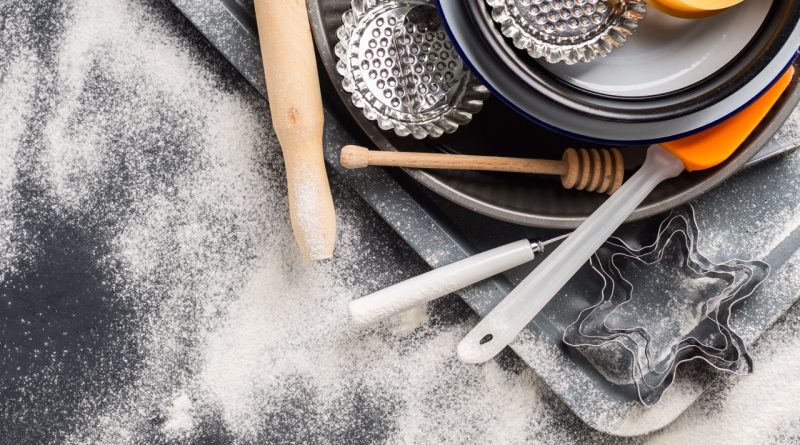The Art Of Sharpening Zwilling Knives Correctly
Proper knife maintenance is essential for any kitchen enthusiast, particularly when it comes to high-quality brands like Zwilling. The art of sharpening knives isn’t merely about using a whetstone or a honing rod; it involves understanding the science behind blade geometry and the materials used in knife manufacturing. This article aims to provide a thorough understanding of sharpening techniques, the right tools to use, a step-by-step guide for effective sharpening, and tips for maintaining the sharpness of your Zwilling knives.
Understanding the Importance of Knife Sharpening Techniques
Sharpening a knife is not just about achieving a sharp edge; it’s about restoring the blade’s original functionality and extending its lifespan. Over time, even the highest-quality knives will dull due to regular use, which can lead to inefficient cutting and increased risk of accidents in the kitchen. Proper sharpening techniques ensure that the blade maintains its intended angle and edge, allowing for smoother, safer slicing and dicing.
Moreover, different sharpening techniques serve various purposes. For instance, honing is a technique that realigns the edge of a blade, while sharpening actually removes material to create a new edge. Understanding these distinctions is crucial for any chef aiming to optimize their Zwilling knives. Using the correct technique not only preserves the integrity of the knife but also enhances the cooking experience, making food preparation more efficient and enjoyable.
Finally, honing your skills in knife sharpening can save you money in the long run. Instead of frequently replacing dull or damaged knives, a little time spent learning proper sharpening methods can rejuvenate your Zwilling collection, ensuring you get the most out of your investment.
Selecting the Right Tools for Sharpening Zwilling Knives
When it comes to sharpening Zwilling knives, the choice of tools can significantly affect the outcome. Zwilling offers a range of sharpening tools designed specifically for their knives, including whetstones, manual sharpeners, and electric sharpeners. Each tool has its advantages, but it is essential to choose one that suits your skill level and the type of knives you own.
Whetstones are often considered the gold standard for sharpening, as they allow for precise control over the angle and pressure applied to the blade. Zwilling’s whetstones are designed with specific grit levels to cater to various sharpening needs, making them ideal for professional and home chefs alike. For those who prefer a quicker method, manual or electric sharpeners can offer convenience but may not provide the same level of precision.
Regardless of the tool chosen, ensure that it is compatible with the Zwilling knife materials, which often include high-carbon stainless steel. Using the wrong sharpening tools can lead to damage or ineffective sharpening, so it’s vital to follow the manufacturer’s recommendations for optimal results.
Step-by-Step Guide to Properly Sharpening Your Knives
To sharpen your Zwilling knives effectively, begin by gathering your chosen sharpening tool, a damp cloth, and a honing steel if available. Start by ensuring the knife is clean and dry. Place the whetstone on a stable surface, with the coarse grit side facing up. For manual or electric sharpeners, follow the manufacturer’s instructions for setup.
Next, hold the knife at the correct angle—typically around 15 to 20 degrees for Zwilling knives. Begin by drawing the blade across the whetstone or sharpener, applying gentle pressure. Move from the heel to the tip of the blade, ensuring even strokes. Repeat this process several times, and then flip the knife to sharpen the other side, maintaining the same angle. If using a whetstone, it’s advisable to alternate between the coarse and fine grits for a polished finish.
After sharpening, wipe the blade with a damp cloth to remove any metal shavings. Test the sharpness by slicing through a piece of paper or a tomato; if it cuts smoothly, you’ve successfully sharpened your knife. Regular practice of this technique will not only enhance your skills but will also ensure your Zwilling knives remain in top condition.
Maintaining Your Zwilling Knives for Long-Lasting Sharpness
Proper maintenance is key to ensuring your Zwilling knives remain sharp for years to come. One essential practice is regular honing, which should be done before each use. Honing realigns the edge of the blade and helps maintain sharpness without the need for frequent sharpening. A honing steel is an effective tool for this purpose and is easy to use—simply hold the steel vertically and swipe the blade at the appropriate angle.
Additionally, storing your knives properly can prevent damage and dulling. Knife blocks, magnetic strips, or protective sheaths are ideal storage solutions that keep blades secure and free from contact with other utensils. Avoid storing knives loosely in drawers, as this can lead to nicks and scratches on the blade, compromising its sharpness and overall integrity.
Finally, regular cleaning and care are crucial. Always hand wash your Zwilling knives with mild soap and warm water, and avoid the dishwasher, which can cause damage. Dry them immediately to prevent rust or corrosion. By incorporating these maintenance habits, you’ll not only preserve the sharpness of your knives but also enhance their longevity, ensuring they remain reliable tools in your kitchen arsenal.
Sharpening your Zwilling knives correctly is an art that combines technique, the right tools, and diligent maintenance. By understanding the importance of sharpening, selecting the appropriate tools, and following a systematic approach to sharpening and care, you can ensure your knives remain sharp and effective. Investing time in these practices will not only enhance your culinary experience but also prolong the life of your cherished Zwilling knives, making your time in the kitchen more enjoyable and efficient.
